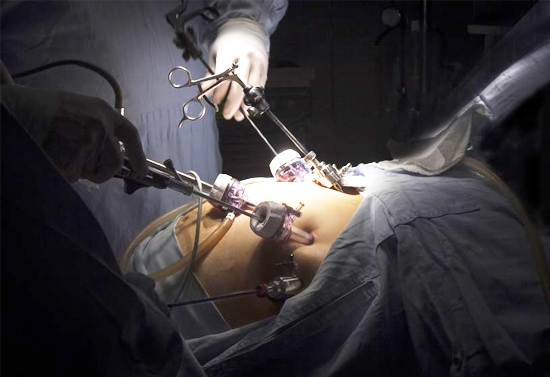Surgical Gastroenterology
Surgical Gastroenterology (SGE) also called Gastrointestinal surgery (GI Surgery) is a highly evolved and specialized area of surgery that deals with surgical problems of the digestive system which includes organs like the Esophagus, Stomach, Small intestine, Large intestine, Rectum, Anal canal, Liver, Pancreas, Gall bladder, and Bile duct. The evolution of this department from the erstwhile General Surgery was an end result of an explosion of knowledge in the field of gastroenterology and enormous technical and technological advancements. The arrival of this Specialty has resulted in better outcomes for patients with complex GI surgical problems.
Endoscopy Clinic
Endoscopy Clinic
Endoscopy is the insertion of a long, thin tube directly into the body to observe an internal organ or tissue in detail. It can also be used to carry out other tasks including imaging and minor surgery. Endoscopes are minimally invasive and can be inserted into the openings of the body such as the mouth or anus.
Hernia Clinic
Hernia Clinic
A hernia is the abnormal exit of tissue or an organ, such as the bowel, through the wall of the cavity in which it normally resides. Hernias come in a number of types. Most commonly they involve the abdomen, specifically the groin. Groin hernias are most commonly of the inguinal type but may also be femoral.
Gastroenterology Clinic
Gastroenterology Clinic
Gastroenterology is the branch of medicine focused on the digestive system and its disorders. Diseases affecting the gastrointestinal tract, which include the organs from mouth into anus, along the alimentary canal, are the focus of this specialty. Physicians practicing in this field are called gastroenterologists.
Liver Clinic
Liver Clinic
The liver is an organ about the size of a football. It sits just under your rib cage on the right side of your abdomen. The liver is essential for digesting food and ridding your body of toxic substances. Liver disease can be inherited (genetic).
Pancrease Clinic
Pancreas Clinic
The pancreas is an organ of the digestive system and endocrine system of vertebrates. In humans, it is located in the abdomen behind the stomach and functions as a gland. The pancreas has both an endocrine and a digestive exocrine function.
GI Oncosurgery
GI Oncosurgery
Gastro-intestinal Oncosurgery is a subspecialty, which deals with the management of cancer of esophagus, stomach, small bowel, colon, rectum, anal canal, gall bladder & biliary tract, pancreas and liver.
Hepato-pancreato-biliary surgery
Hepato-pancreato-biliary surgery
Hepato-pancreato-biliary (HPB) surgery consists of the general surgical treatment for benign and malignant diseases of the liver, pancreas, gallbladder, and bile ducts. These are among the most challenging and complex surgical procedures performed in General Surgery and require a high degree of expertise and skill.
Advanced Laparoscopic Surgery, Esophageal surgery, Portal Hypertension surgery, Minimal Access surgery
Advanced Laparoscopic Surgery, Esophageal surgery, Portal Hypertension surgery, Minimal Access surgery
Advanced laparoscopy is an open surgery where an incision is made in the skin of the abdomen. The incision can be up to several inches in length, but is usually no more than a 1/2 an inch in length. Advanced laparoscopic surgery is also known as minimally invasive surgery.
Esophagectomy is the main surgical treatment for esophageal cancer. It is done either to remove the cancer or to relieve symptoms. During an open esophagectomy, the surgeon removes all or part of the esophagus through an incision in the neck, chest or abdomen.
Surgery aims to disrupt esophagogastric collateral circulation through devascularization procedures or to decrease portal pressure by creating portoportal or PSS. Devascularization procedures are useful in patients with esophageal varices and unfavorable anatomy for a shunt.
Minimal access surgery is completed with one or more small incisions instead of a large incision. The surgeon passes a telescope with a video camera through a small incision (usually only 1/4`` long) into a body cavity.


